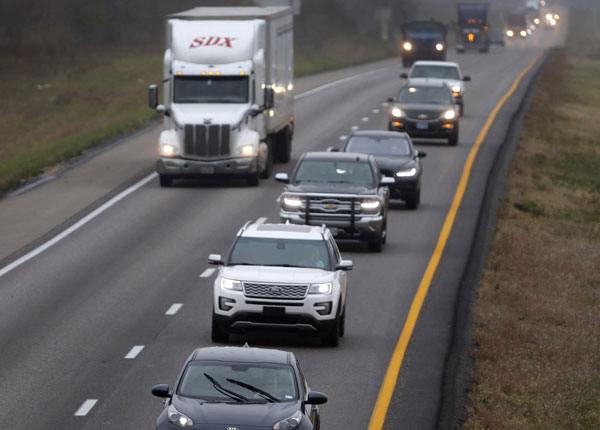
Rules of the Road for Safe Driving: Allowing Others to Pass
Updated Oct. 20, 2020In situations when another driver is seeking to pass you, consider what you can do to make the execution of that pass as easy as possible. Remember that courteous driving behavior benefits all road users; always treat other drivers as you would wish to be treated yourself.
When you can see that another driver is attempting to pass you:
- 1

Do not increase your speed.
Slowing down is not usually necessary, unless you can see that the other driver is struggling to pass. However, if there are no vehicles following closely behind you, you may wish to reduce your speed slightly to make the pass even easier. - 2

Remain in your lane.
The other driver will have assessed whether they can safely pass, based on your current speed and position. Changing lanes may make it harder for them to pass, endangering you both. - 3

Move over within your lane.
If it is safe to do so, allow the other driver more room to complete the pass and a better view of the roadway ahead, by moving over to the far right-hand side of your lane.
Never block passing drivers
If you notice another driver attempting to pass you or signaling their intention to pass, yielding the right-of-way by facilitating the pass is always the safest course of action. Taking any steps to stop the driver from passing you is extremely dangerous and could cause a collision. If you speed up to prevent somebody from passing you, an accident could occur because:
- The passing driver may be forced to remain in a lane occupied by oncoming traffic.
- The passing driver may collide with your vehicle as they attempt to merge back into your lane.
- The passing driver may be unable to abort the maneuver as there is no longer enough space behind your vehicle to allow them back in.
As frustrated as you may feel when another driver attempts a risky or unnecessary pass, remember that blocking that pass will only make the situation more dangerous for every driver on the road – yourself included.
Make space for passing drivers
Whenever traffic and road conditions allow it, you should make space for any vehicle seeking to pass you by reducing your speed. If there are vehicles to your rear, be sure to warn them by tapping your brake pedal to activate your brake lights, before slowing down.
If the driver seeking to pass you suddenly realizes that they do not have enough time to complete the maneuver, they may decide to abort the pass and merge back into your lane behind you. If this happens, increase your speed slightly to make room behind your vehicle for them. Sometimes, the situation may make it impossible for you to accelerate to make room. In these circumstances, you should reduce your speed and merge right onto the shoulder to avoid a collision.




